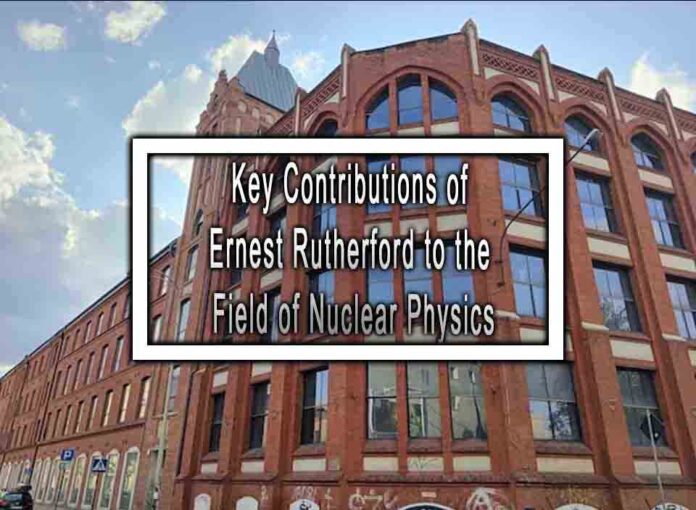Ernest Rutherford, a New Zealand-born physicist, made several key contributions to the field of nuclear physics and the understanding of atomic structure. His groundbreaking experiments and theories paved the way for modern nuclear physics. Here are some of his key contributions:
1. Discovery of the Nucleus (1909):
- Rutherford’s most famous experiment is the gold foil experiment, also known as the Rutherford scattering experiment. In this experiment, he and his colleagues bombarded a thin gold foil with alpha particles (helium nuclei).
- They expected the alpha particles to pass through the foil with minimal deflection, given the prevailing “plum pudding” model of the atom, which suggested that positive charge was evenly distributed throughout the atom. However, some alpha particles were deflected at large angles, and a few even bounced back.
- Significance: This unexpected result led Rutherford to conclude that atoms have a small, dense, and positively charged nucleus at their center, while electrons orbit the nucleus. This discovery revolutionized our understanding of atomic structure.

2. Rutherford Model of the Atom (1911):
- Building on his nuclear model of the atom, Rutherford proposed a new atomic model in 1911. This model depicted the atom as mostly empty space, with a tiny, positively charged nucleus at the center and electrons orbiting it.
- Significance: The Rutherford model laid the foundation for our modern understanding of atomic structure and became a cornerstone of atomic physics.
3. Radioactive Decay Studies:
- Rutherford conducted extensive research on radioactive materials. He developed a theory of radioactive decay and identified different types of radiation, including alpha, beta, and gamma radiation.
- Significance: His work in this area contributed to the understanding of nuclear processes and the behavior of atomic nuclei.
4. Transmutation of Elements:
- Rutherford and his colleagues were the first to achieve the artificial transmutation of elements. They used alpha particles to transform nitrogen into oxygen in 1919.
- Significance: This experiment demonstrated that it was possible to change one element into another through nuclear reactions, opening the door to nuclear physics and the study of nuclear reactions.
5. Nobel Prize in Chemistry (1908):
- Rutherford was awarded the Nobel Prize in Chemistry in 1908 for his investigations into the disintegration of elements and the chemistry of radioactive substances.
- Significance: This recognition highlighted the importance of his early work in radioactivity.
Ernest Rutherford’s contributions to nuclear physics and atomic theory laid the foundation for many subsequent developments in physics and chemistry. His discoveries about the atomic nucleus, radioactive decay, and the transmutation of elements reshaped our understanding of the fundamental building blocks of matter and the nature of the atom. Rutherford’s work remains fundamental to the fields of nuclear physics and nuclear chemistry.











